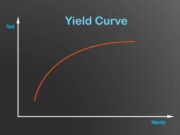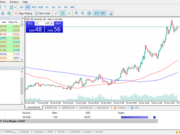
How to Calculate the Real Rate of Return on Your Investment
The real rate of return helps investors determine which investment offers a higher return without taking into account the impact of taxes or investment fees. By subtracting the nominal interest rate from the inflation rate, the real rate of return is a useful tool that can help you decide between similar investment options. It is easy to calculate and a very useful metric to use when making investment decisions. This article will help you understand how to calculate the real rate of return on your investment.
Nominal rate
Nominal rate of return (NRR) refers to the yield of an investment over time and excludes negative factors such as inflation. The use of this measure allows you to easily compare different types of investments. Nominal rates are also useful for evaluating the tax treatment of different types of investments. To calculate your own nominal rate of return, you can use the share price of one stock. Listed below are two common rates of return that you may encounter when making an investment.
Nominal rates represent the amount of interest that an investor will earn over time, before expenses. For example, a $1,000 bond with a 6% coupon will generate $60 in interest over a year. The real interest rate, on the other hand, accounts for compounding interest over a period of time and is adjusted for inflation. This is the preferred way to compare investments. Nominal rates are also used in the case of mortgages.
Inflation rate
Nominal rate of return and inflation rate are two ways to measure the performance of an investment. The nominal rate of return is the stated rate of return, such as the interest rate you’re offered by a bank on your checking account. Inflation is measured using the Consumer Price Index, which measures changes in the prices of regularly used consumer goods and services in a particular period. The base year for this index is 100. Businesses may use their own consumer price index, taking into account only the goods and services that relate to their business.
The real rate of return is the actual annual rate of income you’ll earn on your investment after taking into account inflation. The formula for calculating real rate of return is the original nominal rate divided by the inflation rate. These rates can be entered into a calculator to calculate the real rate of return. The calculator will then display your actual cash value over time, based on the real rate of return and inflation rate. If you want to know more about the relationship between nominal rate of return and inflation rate, read on!
Bond’s price
A bond’s price is the amount an investor is willing to pay for it. Most investors receive these prices as a percent of the bond’s face value. For example, if a corporate bond costs $20,000, investors would pay $990 for it. If the bond’s price changes from 95 to 100 over three points in time, the price is considered to be “trading at par” and yields 4%.
The coupon rate on a bond is based on prevailing interest rates. For example, if the interest rate goes up to 7%, a buyer would be willing to pay more for it. This means he would be able to earn the same amount of money if he purchased the bond at a discount of $20,000. Similarly, if a buyer would have to pay 3% interest on a bond worth $20,000, he or she would have to reinvest the money in another bond with a lower rate.
Bond’s yield
An individual agent holds an international bond at the beginning of a period t. At the start of the period t, the yield is paid in the units of Home aggregate consumption. In a stochastic environment, the price of bonds is high because investors are buying and selling after the uncertainty has been resolved. A bond is not an ex-ante insurance against a country’s income shocks, but it does enable an individual agent to reallocate his wealth and smooth his consumption over time.


































